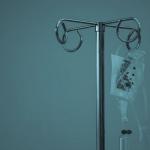Common Surgical Errors and How They Happen
Most surgeries go as planned, but mistakes can still occur, leading to severe consequences. Surgical errors can lead to longer recovery times, additional procedures, and both physical and emotional impacts. This article outlines common surgical errors, explains why they occur, and discusses their impact on patients.
Wrong-Site Surgery
Wrong-site surgery occurs when a procedure is performed on the wrong body part, such as operating on the left knee instead of the right. Miscommunication, unclear protocols, or rushed preparation are often to blame. Despite pre-surgery verification checks, errors still happen when protocols are not followed.
Wrong-site surgery is largely preventable but can lead to unnecessary operations, increased pain, and extended recovery times, affecting quality of life. Emotional turmoil, loss of trust, and legal battles often follow, adding further strain on patients and their families. Strong leadership and consistent procedural checks are critical to reducing these errors.
Wrong-Patient Surgery
Wrong-patient surgery involves performing a procedure on the wrong individual. This mistake is typically caused by patient identification errors or record mix-ups. Safety protocols, such as the "time-out" process, aim to prevent these issues; however, time pressure or stress can still lead to mistakes.
Wrong-patient surgeries inflict both physical harm and emotional trauma, often resulting in anxiety, depression, and mistrust of medical professionals. Robust identification systems, such as barcodes and wristbands, and fostering a culture of accountability are crucial in reducing these incidents. Regular auditing of identification procedures can further enhance patient safety.
Instruments Left Inside the Patient
Leaving surgical instruments, such as sponges or clamps, inside a patient is a serious but preventable error. It can cause infections, require further surgeries, and prolong recovery. Causes include inadequate instrument tracking or distractions in the operating room. Hospitals often count instruments before and after surgery and utilize technology such as RFID tags; however, human vigilance remains crucial.
Patients may face severe pain and additional surgeries, increasing the risk of complications. Prioritizing training and using technological solutions can reduce these errors. Developing standardized counting protocols and double-check systems can significantly mitigate these risks.
Anesthesia Errors
Anesthesia mistakes can lead to brain damage or death. Errors may include incorrect dosage or improper monitoring of vital signs. These mistakes often arise from calculation errors, communication failures, or equipment issues. Effective anesthesia management involves proper training, thorough checks, and vigilant monitoring.
Effective communication among anesthesiologists, surgeons, and nurses is crucial for preventing complications. Patients and families should be informed about anesthesia risks and encouraged to ask questions. Pre-anesthetic consultations and careful review of patient history are essential preventative measures.
Nerve Damage and Lacerations
Accidental nerve damage or lacerations during surgery can lead to long-term pain, weakness, or loss of function. Contributing factors include the surgeon's inexperience or hurried movements. Precision and careful handling of instruments are crucial to prevent these complications.
When nerve damage occurs, patients often require additional treatments and rehabilitation, which can significantly impact their quality of life. Continuous education and skill enhancement for surgeons are crucial in minimizing nerve injuries. Assigning experienced surgeons for complex procedures can further reduce these incidents.
Infections from Poor Sterile Technique
Infections can develop when sterile techniques are not followed, such as using non-sterile instruments or failing to properly sanitize hands. These infections can lead to severe complications like sepsis or delayed healing. Strict hygiene and sterilization are vital to minimize infection risks.
Surgical teams must follow rigorous protocols, and patients should be educated on the signs of infection to seek prompt medical attention. Regular monitoring and adherence to sanitation guidelines can ensure that sterile techniques are maintained.
Preventing Surgical Errors
Preventing surgical errors requires teamwork and a commitment to patient safety. Key strategies include:
- Clear communication – Ensuring all team members have accurate information about the patient and procedure.
- Protocol adherence – Following checklists and verification steps, like the "time-out" process, to confirm the correct patient, procedure, and site.
- Training – Regular training sessions and simulations help surgical teams stay prepared.
- Technological solutions – Tools like barcodes and instrument RFID tracking can reduce retained items.
- Patient involvement – Encouraging patients to ask questions adds another layer of verification.
Protecting Your Rights After a Surgical Error
Surgical errors can have lasting effects. Many mistakes are preventable with better communication, strict protocols, and attentive care. If you or a loved one has suffered due to a surgical error, you may be entitled to compensation. Consulting an experienced medical malpractice attorney is the best way to protect your rights and well-being.







